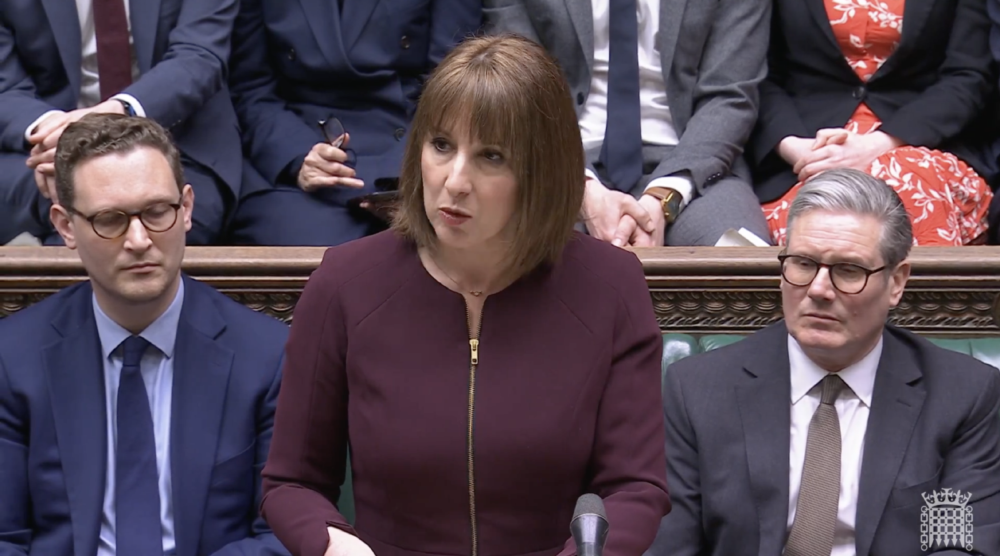No extra funding for schools was announced in today’s spring statement, frustrating union bosses and prompting warnings of “deep anger among education staff”.
Chancellor Rachel Reeves did mention schools in her House of Commons speech when she accused the Conservatives of leaving school roofs “literally crumbling”.
But despite a pledge to increase capital spending across government more broadly, the statement included no extra capital cash for schools.
They show the Department for Education’s capital budget will increase by £100 milllion in 2025-26, compared to the forecast at the autumn budget. But this funding is for ten new “technical excellence colleges”.
The autumn budget did raise capital spending from £5.5 billion this year to £6.7 billion in 2025-26, but leaders had argued they needed more.
The documents also show the core schools budget will rise to £64.8 billion next financial year. Again, this is around £900 million higher than when the budget was issued in the autumn.
But extra funding for national insurance rises totalling around £900 million for schools has been announced since then.
‘Children are losing out’
Daniel Kebede, the general secretary of the National Education Union, said austerity was “ended in deeds not words”.
“The spring statement will cause deep anger among education staff because it does not address the key issue preventing schools and colleges from supporting children and young people – a lack of funding.”

He warned cuts to funding and “huge real terms pay cuts of a fifth since 2010 have made teaching less attractive and the serious recruitment and retention issues are now plain for all to see. Children are losing out.
“Labour has pledged to increase opportunities for working class children, but this simply won’t happen without investment in our schools and funding for the pay increases needed to value, recruit and retain the educators we need.”
Paul Whiteman, general secretary of the NAHT leaders’ union, added that the “chancellor’s emphasis on how cuts to capital spending under the previous government left school roofs crumbling will raise hopes of desperately-needed further investment in buildings which are no longer fit for purpose”.
But he warned school budgets “remain under severe pressure after years of under-investment.
“It will be absolutely vital that they are protected and built upon in the multi-year June spending review, with additional funding urgently needed for core services, supporting children with educational needs, and the school estate.”
Fears over ‘ominous’ efficiency drive
The ASCL school leaders’ union had called for the statement to restore billions in “lost” school capital funding.
According to the National Audit Office, the Department for Education requested £4 billion a year between 2021 and 2025 but was only allocated £3.1 billion. This makes a total shortfall of £3.6 billion over that period.

Julia Harnden, ASCL’s funding specialist, said: “Nothing in the spring statement changes the bleak financial situation being faced by schools and colleges.
“The reality is that many will have to make further cuts to their budgets and thus the educational provision they are able to provide to children and young people.”
Today’s spending review revealed that resource funding across government would “still grow in real terms from 2025-26 to 2029-30, but at a slightly slower rate than set out at the budget last autumn, averaging 1.2 per cent per year.
Harnden said this “looks very tight given the competing demands of different departments.
“It is ominous that the government says it intends to drive efficiencies across the public sector and we would once again point out that all possible ‘efficiencies’ were exhausted long ago in schools and colleges and that any action to further drive down costs is better known as ‘cuts’.”
Whiteman added that leaders would be “anxious to understand what some of the chancellor’s headline announcements on public finances will mean for schools – including the reduction in day-to-day spending above-inflation in future years and the annual increase in capital funding”.
And Dr Patrick Roach, leader of the NASUWT teaching union, said: “We will be looking carefully at how the government continues to invest in all areas of education and wider support for children, young people and families to ensure that teachers can provide the world class education that all pupils deserve.”
2.8% pay rise wouldn’t keep up with average growth
Jack Worth, school workforce lead at the National Foundation for Educational Research, pointed out government finance watchdog the Office for Budget Responsibility has increased its forecast of average earnings growth for 2025-26 from 3 to 3.7 per cent.
Worth said: “In light of this, it seems unimaginable that the Department for Education’s (DfE) teacher pay proposal of 2.8 per cent for the next academic year could remain unchanged.
“The School Teachers’ Review Body (STRB) should consider recommending an increase of least 3.7 per cent in order to continue improving the competitiveness of teacher pay, supporting recruitment and retention efforts.”















School building risks do not stop at RAAC!
Given the political capital that was correctly applied to expose years of underinvestment in the school estate, it is both surprising and very disappointing to see the same static levels capital allocation. This is a very risky policy.